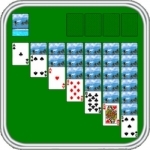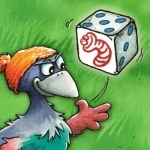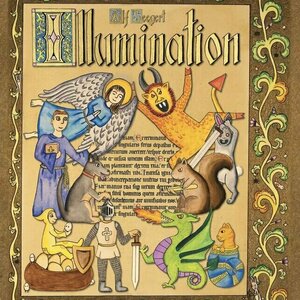LeftSideCut (3776 KP) rated the PlayStation 4 version of Star Wars Jedi: Fallen Order in Video Games
Apr 7, 2020
For a start, the game looks amazing. The settings are full of colour one second, and then harsh and cold the next, as you traverse forest planets like Kashyyyk, before navigating through Empire facilities.
The game is set between Episodes 3 and 4 of the movie canon, and borrows asthethic elements from both the original and prequel trilogies. It's interesting to be in the middle of a universe that has recently seen the destruction of the Jedi Order.
The gameplay is also great. The exploration and parkour elements are reminiscent of the Uncharted series, but adds enough Force stuff to make it not feel stale, and the combat is thrilling. JFO is genuinely challenging at times, especially during boss battles. You have to approach each encounter with patience and some sort of plan, or you'll find yourself struggling. It's not to dissimilar from Dark Souls in that respect.
By the time I had finished the campaign, and went through areas again in my pursuit of Platinum, I had unlocked all skills, and combat became easier, at times, really giving you the feel of a Jedi Knight.
You can also build and edit your own lightsaber, which is a nice touch.
The story is ok, largely about finding a McGuffin to help restore the Jedi, but this is one of those games that is all about the journey. The characters you meet along the way are all fleshed out to an acceptable degree, and BD-1, your droid companion for the campaign, is endearing and feels essential to the way the story pans out.
My main criticism is that it didn't have a huge amount of replay value once I was done. After finishing the campaign, it didn't take a massive amount of time to mop up everything else, and that was that, but it's forgivable considering how tight and polished the rest of the game feels.
Star Wars Jedi: Fallen Order is another shining example of how important single player games are in an age where multiplayer games reign supreme. Go and play it.

Solitaire (Klondike)
Games and Entertainment
App
Klondike is a solitaire card game. Many people refer to Klondike as "solitaire". aking a standard...
Purple Phoenix Games (2266 KP) rated Illumination in Tabletop Games
Oct 5, 2021
Illumination is a game about two monks who are tasked with illuminating the pages of manuscripts with drawings in the hopes of becoming the next head of the Scriptorium: The Scriptmaster, one might say. However, one of the monks gets a little itch and begins to draw irreverent subjects, like demons, dragons, and such. Which monk will earn the made-up-by-me title of Scriptmaster? Guess you will have to play to find out.
DISCLAIMER: We were provided a copy of this game for the purposes of this review. This is a retail copy of the game, so what you see in these photos is exactly what would be received in your box. I do not intend to cover every single rule included in the rulebook, but will describe the overall game flow and major rule set so that our readers may get a sense of how the game plays. For more in depth rules, you may purchase a copy online or from your FLGS. -T
As with many games that are well endowed with components, setup can be a bit of a task. The game will be focused around a few main areas. First, the three manuscript pages are placed on the table in any orientation, with the purple wild Drollery tiles placed on one text box on each page. The Monastery mat is placed nearby as well, with the Abbot pawn randomly placed on a blank station. This pawn will be moved around the map during play to determine which rituals may be performed at any one time. Each player will have their own player mat, upon which will be placed their starting gold (1 for the Reverent player and 5 for the Irreverent player), as well as their starting nine Illumination tiles. The rules mention separating all the Illumination tiles into stacks of three, choosing three of these stacks to flip over and place on the play mat without altering the order. This is very important to keep the tiles in their randomized order. The remainder of the tiles are to be placed nearby in stacks of three. Each player is dealt one starting Scriptorium card and a random Crusade card that will offer bonuses at the end of the game. Once all setup, the game may begin with the Reverent player’s turn.
On a turn, the active player will choose from their mat one row or column of three tiles to be played. They take the three tiles and place them upon one of the three book pages on the table, in the margins. From there the player can choose any tile from the margin to place onto the page in any order they wish, upon any quill icon they choose (except for coin tiles – those simply grant two coins immediately). If the tile is placed on a quill of a matching color to that of the tile, the player will immediately collect one coin and place it on the player mat. If the tile is placed on a quill and orthogonally touches a tile of the matching color, the player then collects a Ritual token of the same color. These Ritual tokens are used in sets of three, four, or five in order to earn VP for end of game scoring. Each purple Drollery tile is wild for the purpose of placement and Ritual token collection. Each tile placed will collect its earnings immediately, and any coins earned may be spent immediately as well.
A player may use coins for several purposes throughout the game: move a tile from the margin of one book to the margin of a different book, move the Abbot one space along the track for Ritual purposes, or to draw a Scriptorium card. The other resources are Ritual tokens, and may be spent during the turn as well. In order to spend these, the Abbot must be on the matching location on the Monastery board, and the player may spend three, four, or five matching tokens to perform the Ritual. They discard the tokens, place one of their cubes upon the appropriate icon on the Monastery mat for VP at game end.
At any time during the turn Scriptorium cards may be played. These are very special cards that allow the player to complete certain actions that break the normal rules. This could be a free movement of the Abbot, or switching places of two tiles on the player mat, or even banishing one of the opponent’s tiles to another book entirely.
Why mention the battles in the intro if they are not part of the game? They are. Once opposing foes are placed orthogonally from each other, and all involved tiles are completely enclosed by other tiles or board obstacles, a Bounded Battle will begin. Battles are simple to resolve as it requires players to count the number of combatants on both sides and whichever side has more forces wins the battle. The winner places their cube on the appropriate battle card near the Monastery mat, and the loser gains coins equal to the number of their tiles lost to battle. Tiles that are lost are simply flipped to its opposite side.
Play continues in this fashion of players choosing and placing tiles, drawing and using Scriptorium cards, performing Rituals, and resolving Bounded Battles until both players pass their turn. The game is then over and VP counted in all their places around the play area. The player with the most points becomes the next Scriptmaster Flex and is able to enhance or defile as many manuscripts as they like!
Components. This game has a lot of components, but they are mostly cardboard tiles, cardstock cards and mats, and wooden cubes. The quality is all very fine, as to be expected with Eagle-Gryphon games. The art, for me, is the biggest drawback of the game. I UNDERSTAND why it looks the way it does – in trying to stick with a Medieval manuscript theme some decision were made on the style. It just doesn’t vibe with me. I took a look at the new edition of The Road to Canterbury, by the same designer and publisher, and loved the look of it. I REALIZE that the tiles are supposed to be not only reminiscent of the art style of that time period, but also imaginations of monks and their doodles, but it’s just not for me. I do like the looks of everything else except the art on the tiles, and when that’s the majority of the components I am looking at, I sigh a little. I am absolutely no artist, and I can acknowledge that the art presented is very good and in line with the theme. Oh well.
The game play is very solid, and I do like it quite a bit. Everything makes a lot of sense as to why you are doing the actions, and the most difficult thing to comprehend the first time through is the Bounded Battles. You see, battles don’t immediately happen when you pit one foe against another. In fact, all tiles engaged need to be surrounded by other tiles or battleground obstacles before battle can begin. This allows both sides to add more tiles to help sway the balance of power, and can get a little confusing for some players. Not ME, of course, but SOME players (ok it was totally me the first time through). I am thankful that resolving the battles are pretty simple, and winning battles gives the victor a cool five points.
Other aspects I really enjoy are the Scriptorium cards and the Rituals. Again, the Scriptorium cards can be drawn for two coins during the game and can provide excellent rule-breaking choices to the players. Any time a game has cards that bend the rules, I generally am a fan. The Rituals are merely tokens that are collected and then turned in for points. This doesn’t necessarily sound that interesting until I reveal that a player board only has space for seven items: Ritual tokens AND coins included. So a player may be stacking up coins, and not have space for Ritual tokens or vice versa. Hard choices need to be made sometimes, but to help with that Ritual tokens can also be used like a coin, but not the other way around. So there is no buying Ritual tokens. Having that restriction of seven items on hand is a really nice touch, and makes each turn important.
So all in all I enjoyed my plays of Illumination. I have yet to try the solo version that is included, but I will soon. I feel that of the two Medieval series games I have played I prefer The Road to Canterbury, but I do like the different feel of Illumination. Having a solo mode is also very attractive to me because my wife and I do not always have matching schedules where we can game together. I like Illumination for the actual gameplay, but the art is a turn-off for me. Purple Phoenix Games gives this one an irreverent 4 / 6. If you are looking for something a little different that features some interesting game play, tons of choices, yet is restrictive as well, take a look at Illumination. Try not to complete too many wine and candle rituals though. Those two things don’t mix very well in my experience.

Warzone: Clash of Generals
Games and Stickers
App
When city states fight each other over precious resources, they need war heroes to lead their armies...

JW Library Sign Language
Reference and Education
App
JW LIBRARY SIGN LANGUAGE is an official app produced by Jehovah's Witnesses. It downloads,...

Pickomino - the dice game by Reiner Knizia
Games and Entertainment
App
An appetizingly addictive dice game for up to 4 gambling gobblers. Barbecued worms are in high...

AirTycoon 4
Games
App
Welcome to AirTycoon 4! - Authentic turn based airline management simulation single player game...

The Orchard by HABA - colors & shapes for children
Games and Education
App
Shiny cherries, juicy apples, sweet pears, and glorious plums hang ripe from the trees. But cheeky...



